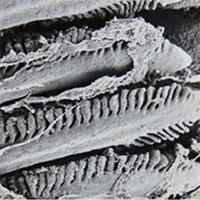Rapid recovery of normal gill morphology and blood physiology in brown trout (Salmo trutta) after short-term exposure to toxic concentrations of aqueous aluminium under non-steady state chemical conditions

Submitted: 16 December 2020
Accepted: 14 April 2021
Published: 17 May 2021
Accepted: 14 April 2021
Abstract Views: 984
PDF: 383
HTML: 22
HTML: 22
Publisher's note
All claims expressed in this article are solely those of the authors and do not necessarily represent those of their affiliated organizations, or those of the publisher, the editors and the reviewers. Any product that may be evaluated in this article or claim that may be made by its manufacturer is not guaranteed or endorsed by the publisher.
All claims expressed in this article are solely those of the authors and do not necessarily represent those of their affiliated organizations, or those of the publisher, the editors and the reviewers. Any product that may be evaluated in this article or claim that may be made by its manufacturer is not guaranteed or endorsed by the publisher.
Similar Articles
- José E. Larios-López, José M. Tierno de Figueroa, Miguel Galiana-García, Javier Gortázar, Carlos Alonso, Extended spawning in brown trout (Salmo trutta) populations from the Southern Iberian Peninsula: the role of climate variability , Journal of Limnology: Vol. 74 No. 2 (2015)
- Rocco Tiberti, Stefano Brighenti, Claudia Canedoli, Rocco Iacobuzio, Matteo Rolla, The diet of introduced brook trout (Salvelinus fontinalis; Mitchill, 1814) in an alpine area and a literature review on its feeding ecology , Journal of Limnology: Vol. 75 No. 3 (2016)
- Gianluca Polgar, Mattia Iaia, Tsung Fei Khang, Pietro Volta, Gross mismatches between salmonid stocking and capture record data in a large Alpine lake basin in Northern Italy suggest a low stocking effectiveness for an endangered native trout , Journal of Limnology: Vol. 82 (2023)
- Massimo Lorenzoni, Antonella Carosi, Massimo Giovannotti, Gianandrea La Porta, Andrea Splendiani, Vincenzo Caputo Barucchi, Ecology and conservation of the Mediterranean trout in the central Apennines (Italy) , Journal of Limnology: Vol. 78 No. 1 (2019)
- Andrew L. Labaj, Jennifer B. Korosi, Joshua Kurek, Adam Jeziorski, Wendel (Bill) Keller, John P. Smol, Response of Bosmina size structure to the acidification and recovery of lakes near Sudbury, Canada , Journal of Limnology: Vol. 75 No. s2 (2016): Lake Orta: a new lease on life
- Yimy Herrera-Martínez, Juan César Paggi, Camilo Bernardo García, Cascading effect of exotic fish fry on plankton community in a tropical Andean high mountain lake: a mesocosm experiment , Journal of Limnology: Vol. 76 No. 2 (2017)
- Javier Sánchez-Hernández, Fernando Cobo, Ontogenetic shifts in terrestrial reliance of stream-dwelling brown trout , Journal of Limnology: Vol. 75 No. 2 (2016)
- Pietro Volta, Norman D. Yan, John M. Gunn, Past, present and future of the fish community of Lake Orta (Italy), one of the world’s largest acidified lakes , Journal of Limnology: Vol. 75 No. s2 (2016): Lake Orta: a new lease on life
- Mohammed Kajee, Helen F. Dallas, Aneri Swanepoel, Charles L. Griffiths, Jeremy M. Shelton, The Freshwater Biodiversity Information System (FBIS) fish data: a georeferenced dataset of freshwater fishes occurring in South Africa , Journal of Limnology: Vol. 82 No. s1 (2023): Georeferenced freshwater biodiversity data
- Andrew Liorti, Teresa Crease, Andreas Heyland, Interactive effects of copper and calcium in Daphnia pulex , Journal of Limnology: Vol. 76 No. 2 (2017)
You may also start an advanced similarity search for this article.

 https://doi.org/10.4081/jlimnol.2021.2000
https://doi.org/10.4081/jlimnol.2021.2000





